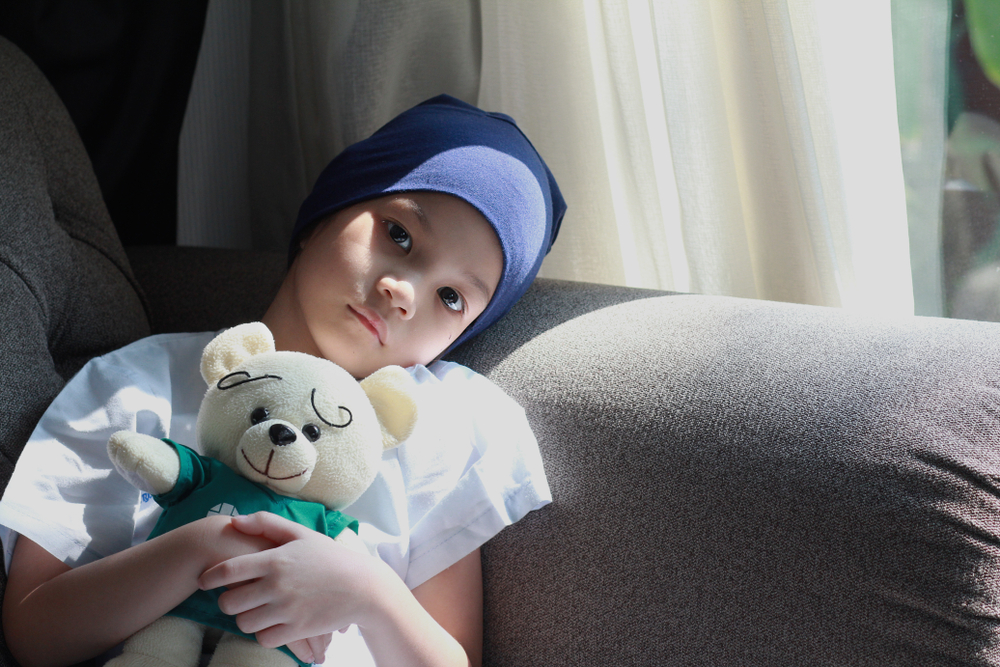Two known cancer-causing genes, HOXA9 and JAK3/STAT5, are cooperating to trigger acute lymphoblastic leukemia, a common form of childhood cancer. Although both genes were already known to play a significant role in leukemia, research by the VIB-KU Leuven Centre for Cancer Biology group showed that the interaction between the two caused cancerous cells to develop at an alarmingly rapid rate. The findings may lead to the identification of alternative therapy options with less severe side effects. Currently the main treatment for leukemia patients is chemotherapy.
Acute lymphoblastic leukemia (ALL) is a particularly aggressive form of blood cancer. The disease is relatively common, and although it occurs in all age groups it most frequently affects children between three and seven years old. About 75% of cases occur before the age of six, and accounts for about 80% of all childhood leukemia.
Until the 1960s an ALL diagnosis was as good as a death sentence, with an estimated mortality rate of over 90%. Fortunately, the tables have turned; with modern chemotherapy the chance of survival following an ALL diagnosis risen to about 90%. Nonetheless, ALL is the most common cause of cancer-related death in children and affects about 1 in every 1500 children worldwide. In Belgium, about 100 new cases are reported each year, leading to heartbreak and suffering with each new young patient.
One and one makes more than two
ALL is caused by the accumulation of genetic mutations that alter the behavior of developing immune cells, transforming them into aggressive leukemia cells. Recent studies have found that ALL cases are often characterized by mutations in a certain gene pathway, called JAK3/STAT5. These mutations are important, as they stimulate the growth of cancerous blood cells. Prof. Jan Cools (VIB-KU Leuven) explains the reasoning behind the recent study:
JAK3/STAT5 mutations are important in ALL, as they stimulate the growth of the cells. However, leukemia patients have additional gene mutations, and we found that JAK3/STAT5 mutations frequently occur together with HOXA9 mutations.
HOXA9 mutations have a well-established role in leukemia development, but it was the additive effect of the HOXA9 and JAK3/STAT5 gene interaction that turned out to be a revelation. Dr. Charles de Bock (VIB-KU Leuven) expands on this:
We observed that HOXA9 boosts the effects of other genes, leading to tumor development. As a result, when JAK3/STAT5 mutations and HOXA9 are both present, leukemia develops more rapidly and aggressively.
A brighter future?
Treatment for ALL is currently mostly restricted to chemotherapy, with the aim being to induce a lasting state of remission. Unfortunately, remission doesn’t meant that the cancerous cells are completely gone, just that they have fallen below a detectable level. Because of this, children suffering from ALL typically undergo follow-up chemotherapy over a number of years. Although the efficacy of chemotherapy is high, the side effects are severe, including (but not limited to) fatigue, nausea and hair loss.
The significance of the HOXA9 and JAK3/STAT5 discovery lies in the potential development of new alternatives to chemotherapy. By identifying the direct cooperation between the two genes, the researchers at VIB have uncovered a possible new drug target for ALL, as well as for other types of leukemia where the two genes play a role. Although the development of a new treatment would still be many years away, this discovery of the underlying mechanism of gene cooperation is an important step forwards for child cancer patients everywhere.


